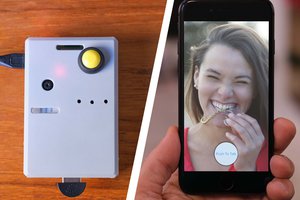In this project I am building quad copter with 250mm frame and Raspberry Pi 2 with Navio2 for flight controller. I no nothing about drones and uavs, that is why I am doing everything step-by-step with the help of manuals and forums.
My first copter build with RPi2 and Emlid Navio2
Focused on making clear every building step with helpful links and tips for total noobs (like me) who wants to get started with drones
 Dmitriy
Dmitriy




 Alain Mauer
Alain Mauer

 haltux
haltux
 MWK
MWK
My 3d printing software is complaining about the STL files you supplied for the vibro mounts. Any chance you could post the original CAD files so I can try exporting it myself?
Great project! I'm following along and building one myself.